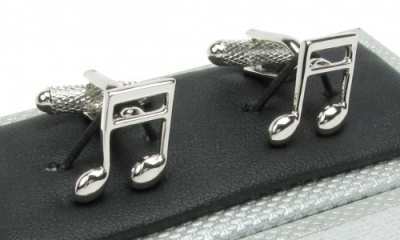

Quaver note software#
Example 7 shows that (i) the different visual positions of middle C on each staff represent one and the same sound and (ii) the gradual incline of the pattern of the notes as the pitch rises is fractured temporarily.Īlthough much of the note-writing in Inside music involves using the software package, Sibelius First, it is worthwhile considering briefly the conventions used when writing staff notation by hand on manuscript paper (the name for pages with staves printed on them). And that is that middle C can be notated on both staves, in different positions on each staff. While this separation of the upper and lower staves is a good idea because it helps visual orientation, it has a drawback.

Middle C has its own little section of staff, long enough to make the position of the note clear, and this has to be written in for each of its appearances. Instead, middle C is notated using a ledger line. Therefore, with keyboard music, the treble and bass staves are conventionally separated out – there is a substantial gap between the bottom line of the treble staff and the top line of the bass staff and there is no middle C line. However, if you have too many lines, the staff is not easy to read. Sometimes keyboard music has been notated using very large staves. A list of ear trainers is provided at the end of this course in Section 10. These include activities such as interactive drills that focus on specific areas of staff notation ranging from a straightforward naming of notes to recognising complex rhythms and chords. There are several sites on the internet that provide trainers. Their use will create ‘oases’ in the learning process where ‘doing’ will help facilitate ‘understanding’, and will also provide feedback as to how you are getting on. Once you feel you have understood a topic, you could try using a trainer to reinforce your knowledge through practice. Spend a reasonable amount of time on each topic so that you can master it before going on to the next.Īlthough this course contains interactive activities that test your knowledge, it is suggested that you reinforce your knowledge with the use of ear-training activities (often called ‘trainers’), where musical sounds are linked to visual symbols. Learning about staff notation and other facets of music theory is a cumulative process. In addition, make sure that you understand each of the topics you have studied before you attempt the following one. This will prove much more beneficial than studying large chunks at a time. Be prepared to undertake a little study each day or alternate day – ‘a little often’ is a good guideline. The Bulgarian, Chinese, Croatian, Czech, Japanese, Korean, Norwegian, Polish, Russian, Serbian and Slovak names mean "quarter" (for the note) and "quarter's pause" (for the rest).If you are starting this course completely from scratch with no knowledge of music theory, tackle each section one by one, and spend as long as you need working on each. The Catalan, French, Galician, and Spanish names for the note (all of them meaning 'black') derive from the fact that the semiminima was the longest note to be colored in mensural white notation, which is true as well of the modern form. The names of this note (and rest) in many other languages are calqued from the same source Romance languages usually use a term derived from the Latin negra meaning 'black': The term "quarter note" is a calque (loan translation) of the German term Viertelnote. The quarter note is played for half the length of a half note and twice that of an eighth note. However, because the hook appeared on the eighth note (or quaver) in the later white notation, the modern French term croche refers to an eighth note.

The word "crotchet" comes from Old French crochet, meaning 'little hook', diminutive of croc, 'hook', because of the hook used on the note in black notation. The note derives from the semiminima ('half minim') of mensural notation.


 0 kommentar(er)
0 kommentar(er)
